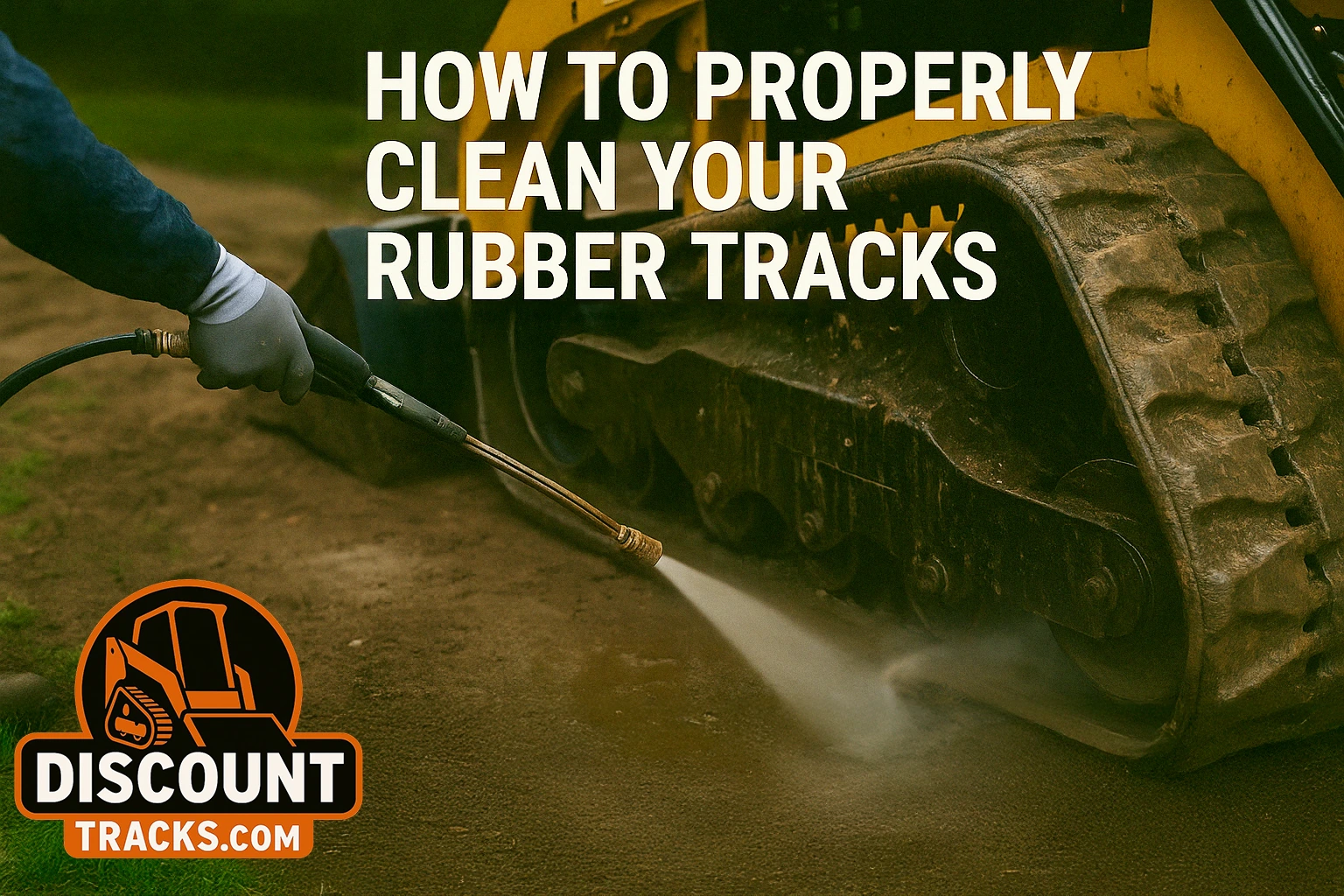Introduction
Picture this: your skid steer or mini excavator just wrapped up a tough job, but it looks like it’s been through a mudslide. Caked-on clay, embedded rocks, and sticky debris are more than an eyesore—they’re silent track killers. While it may seem like just another chore, failing to clean rubber tracks properly can drastically reduce their lifespan and lead to costly repairs.
In this guide, we’ll walk you through the best practices for rubber track cleaning, from essential tools to expert techniques. You’ll learn how to prevent damage, perform quick inspections, and ultimately extend track life with every wash. Whether you operate a CTL, mini excavator, or skid steer, this guide will help keep your equipment running longer and stronger.
Why Bother Cleaning? The Hidden Costs of Dirty Tracks
Let’s break down why routine rubber track cleaning is worth every minute:
- Accelerated Wear: Dirt, grit, and sand trapped in the tread work like sandpaper, grinding down the rubber and damaging undercarriage parts like sprockets and rollers.
- Increased Tension & Stress: Debris packed into tracks increases friction and resistance, placing strain on internal cords and lugs.
- Damage Potential: Embedded rocks can cause punctures, tears, or chunking. Moisture-soaked mud can degrade rubber over time.
- Hidden Problems: Dirt conceals cracks, cuts, and loose bolts—issues that can go unnoticed until failure.
- Corrosion: Trapped moisture leads to rust, especially around metal components and seals.
Bottom line: Regular cleaning is a cost-effective way to prevent track damage and prolong your machine’s operating life.
Essential Tools & Safety Gear for Track Cleaning
Gather these before getting started:
- Shovel or Scraper: For breaking off large clumps of debris.
- Pressure Washer: Ideally 2000-3000 PSI. Avoid blasting seals or edges directly.
- Water Source: Sufficient for a thorough rinse.
- Stiff-Bristled Brush (Optional): For stubborn grime (avoid wire brushes).
- Safety Glasses: Protect against flying debris.
- Waterproof Gloves & Boots: Stay safe and dry while working.
Step-by-Step Guide: How to Properly Clean Your Rubber Tracks
Step 1: Choose a Suitable Cleaning Area
Park on stable, well-drained ground. A wash bay is ideal. Avoid cleaning in environmentally sensitive areas if using a pressure washer or lots of water.
Step 2: Initial Debris Removal (The “Dry” Clean)
Use a shovel or scraper to knock off large, visible chunks of mud and stones. Focus on the main tread and visible undercarriage. This step reduces the time and water needed later.
Step 3: Systematic Wet Cleaning (Pressure Washing)
Start from the top of the track and work down. Hold the nozzle at a 45-degree angle, keeping 1-2 feet away from the surface to prevent damaging seals or rubber. Clean the tread and guide/lug areas thoroughly.
Step 4: Focus on Critical Areas (Undercarriage)
Pay special attention to:
- Between rollers
- Around idlers
- Sprocket teeth
These areas trap the most damaging debris. Move the machine slightly to expose all components if needed.
Step 5: Rinse and Inspect
Finish with a full rinse. While the tracks are clean, visually inspect:
- Cuts, cracks, and tears
- Exposed cords or chunking
- Embedded objects
- Wear on undercarriage components
Cleaning Frequency: Making it a Habit
- Ideal: After every use in mud, snow, or abrasive terrain.
- Minimum: Weekly or bi-weekly in cleaner conditions.
- Pro Tip: Consistency beats occasional deep cleans every time.
Quick Tips & What NOT to Do
Do:
- Clean consistently
- Inspect during cleaning
- Focus on undercarriage
Don’t:
- Use harsh chemical cleaners
- Use wire brushes or sharp tools
- Blast seals with high-pressure water
Clean Tracks Mean Longer Life & Better Value
Routine track maintenance is simple, fast, and highly effective. By keeping your tracks clean, you’re protecting your machine, reducing repair costs, and maximizing your investment. Especially when paired with high-quality, durable tracks from Discount Tracks, cleaning becomes an easy way to extend track life and improve cost-efficiency.
Conclusion
Don’t underestimate the power of clean! Regularly and properly cleaning your rubber tracks is essential for preventing premature wear, avoiding costly damage, and ensuring reliable machine operation.
It’s a small investment in time that significantly helps extend track life and saves money in the long run.
Make track cleaning a routine part of your operation! And when wear eventually occurs, trust Discount Tracks for high-quality, durable replacement tracks that offer outstanding value. Browse our selection or contact our experts today!


